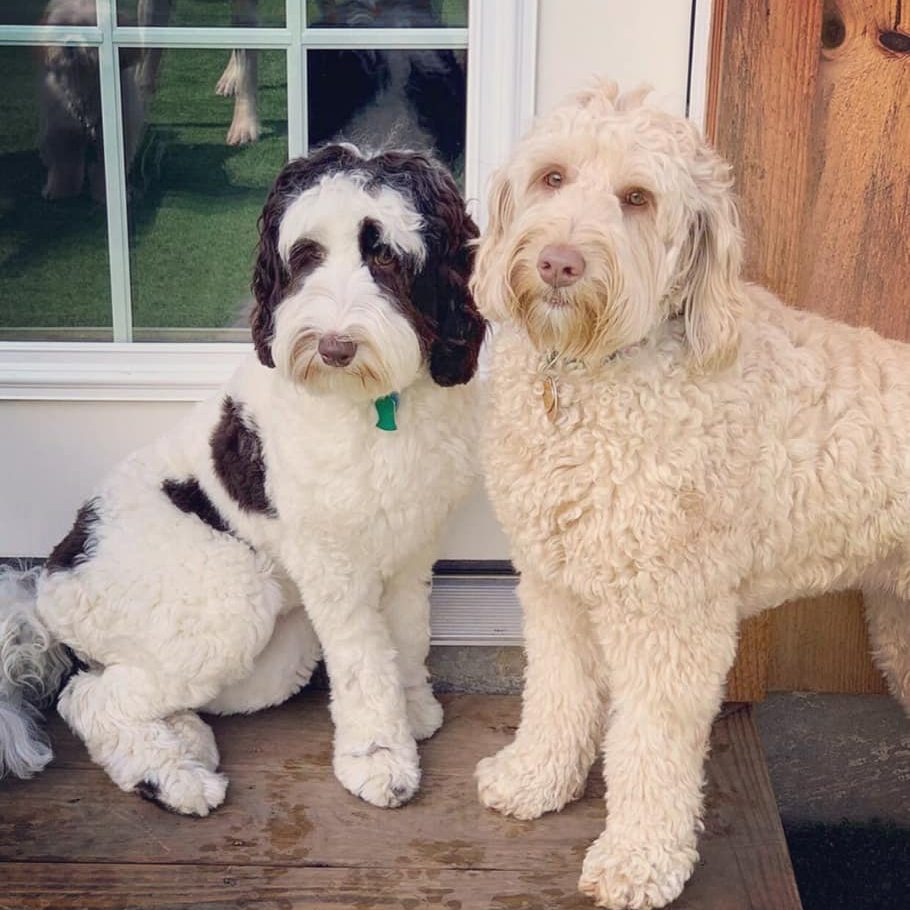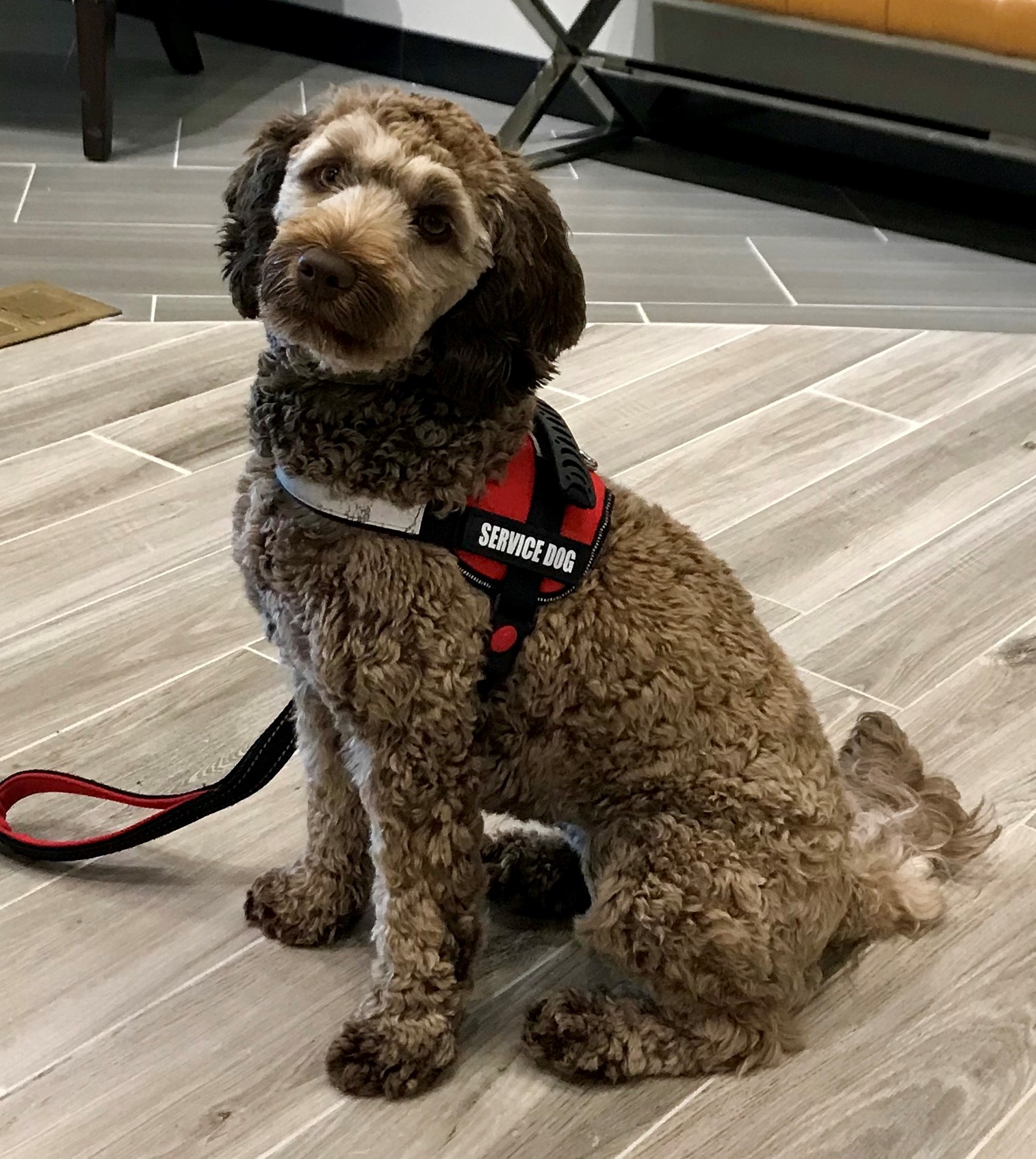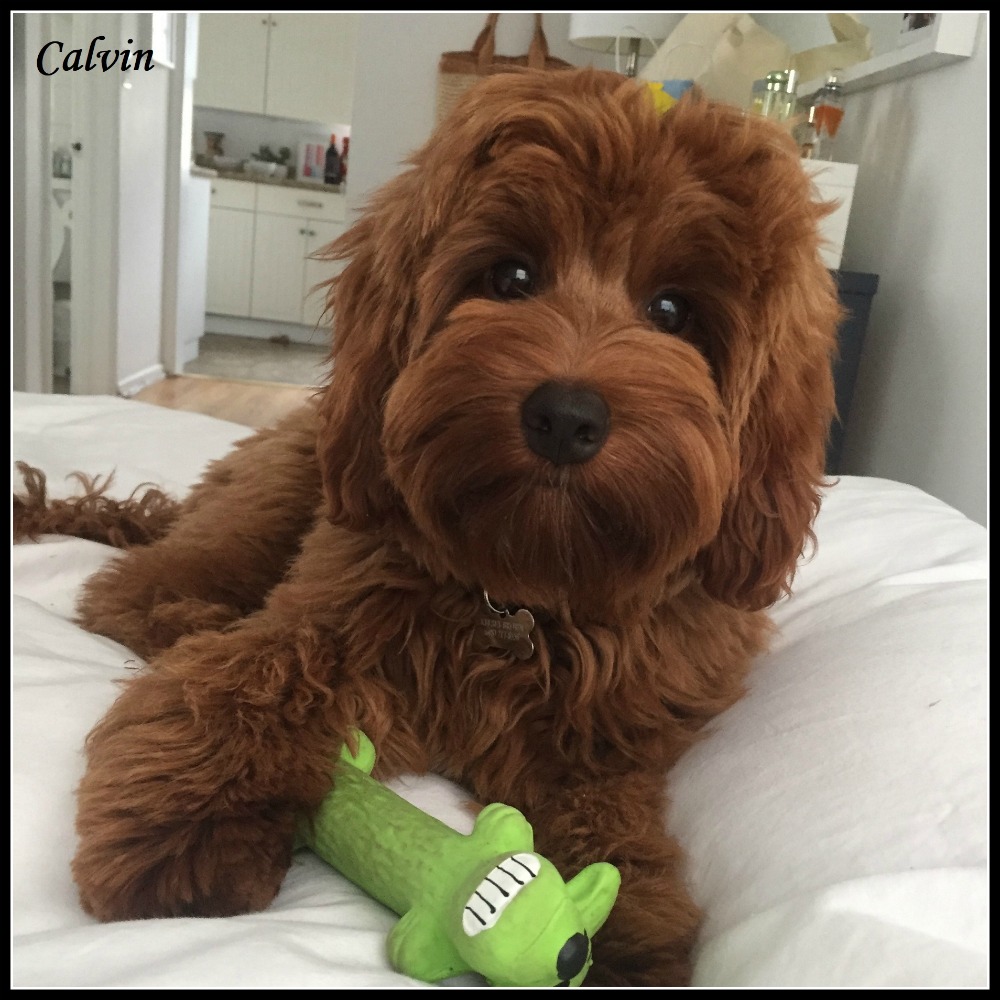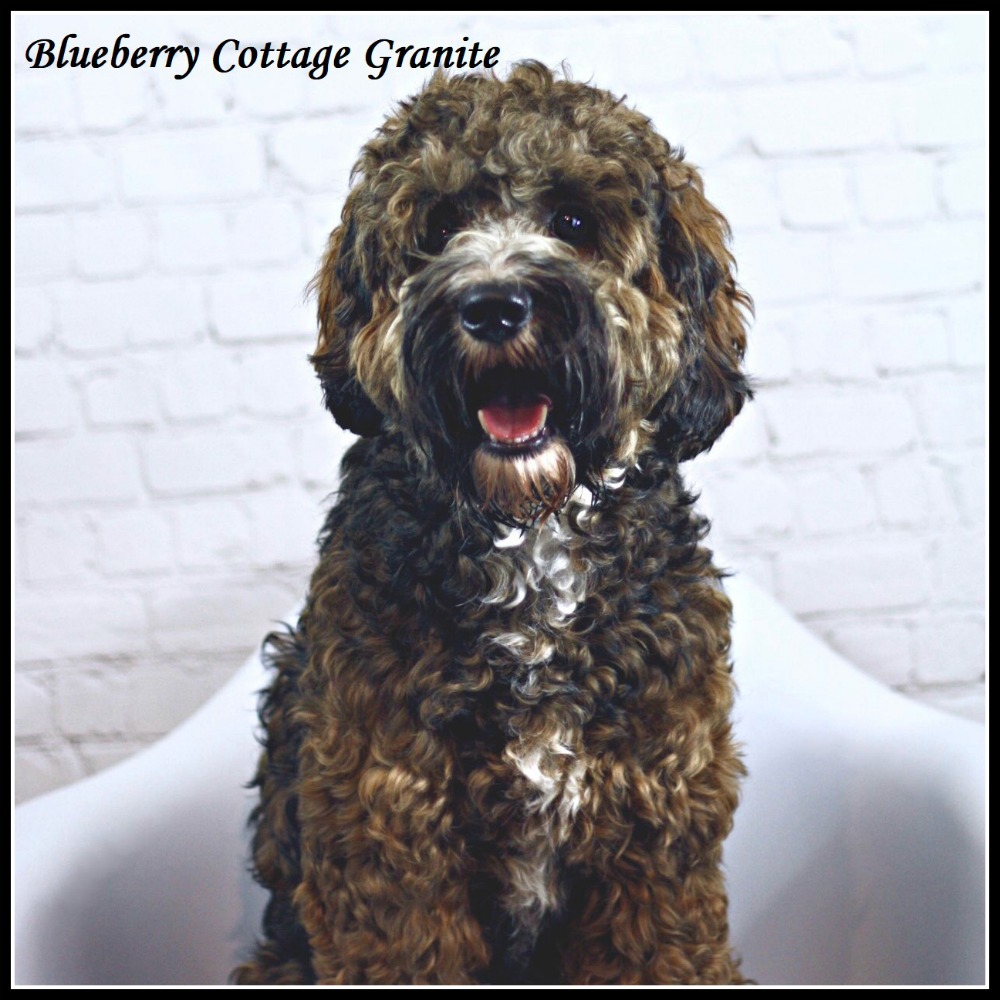In 1988, Wally Cochran of The Royal Guide Dogs in Victoria, Australia produced the first litter of labradoodles. The litter was in response to a request from a blind lady in Hawaii who needed a guide dog that wouldn’t aggravate her husband’s allergies. Hair and salivia samples from dozens of poodles were sent to the couple to see if they would cause an allergic reaction. Unfortunately, they all bothered him. With permission from the management of The Royal Guide Dogs, Mr. Cochran crossed one of their labs with a Standard Poodle. The cross produced their first litter of labradoodles. Three puppies were born, one of which didn’t bother the husband’s allergies. This pup went on to be a wonderful guide dog and companion for the couple.
Temperament
Extremely clever, sociable, comical, joyful, energetic, while soft and quiet when handled. They approach people in a happy, friendly manner, are keen, and easy to train. They display an intuition about their family members’ or handler’s current emotional state or needs. This ability to “know” is what has made the labradoodle an excellent dog for individuals with special needs.
Sizes
- Miniature is 14-16 inches at the shoulder and weighs approx 15-25 lbs
- Medium is 17-20 inches at the shoulder and weighs approx 30-45 lbs
- Standard is 21-24 inches at the shoulder and weighs approx 50-65 lbs





